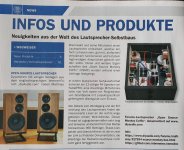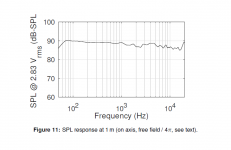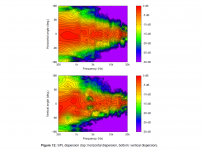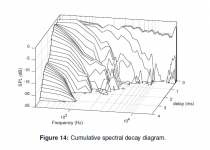Those polars are fantastic right where the ear is most sensitive. Nice work!
Uhm, well, I guess your waveguides are doing a good job 🙂
I finished the second box!
I am sill waiting for the last bits and pieces to complete the final build of the xovers. In the meantime, I have worked a bit on the documentation. I guess this still needs some polishing here and there, but most things are there. Would anyone like to have this published in a proper journal? audioXpress is gone, and so is Linear Audio. Thoughts?
GitHub - mbrennwa/osmcdoc: Documentation for the Open Source Monkey Coffin
that's professional work mbrennwa!
Heads up!
Just two little heads up for those who want to build the OSMC (I correced both issues in the OSMC documentation):
1. Damping / absorber materials
In the final build of my Monkey Coffins I stuffed them in the same way as the prototypes, except that I used Basotect melanine foam everywhere, where the prototype had quite a bit of the "normal" egg crate foam. I obviously didn't think a lot when I did this... the sound absorption of the melanine foam is much more efficient, and the Basotect stuff I had is also a little bit thicker than the "normal" egg crate foam I used in the prototypes. The result was that the bass was a bit too thin. Thanks to someone who looked at the OSMC documentation carefully, I realised my mistake and removed much of the Basotect. The bass is now better than before (because there is less volume of absorber material), while I hear absolutely none of the midrange colorations I got with the same amount of "normal" egg crate foam. The melamine foam is good stuff!
2. Wrong capacitor value in x-over schematic
There was a mistake in the BOM for the x-over in the OSMC docs (wrong: C_M3 = 6.8 uF / correct: C_M3 = 5.6 uF). This error happened because I used the wrong notes when I did the BOM. I found this error in the docs when I re-built the x-over according to the docs, and when I double checked the new x-overs relative to the prototypes there was a different part...
Just two little heads up for those who want to build the OSMC (I correced both issues in the OSMC documentation):
1. Damping / absorber materials
In the final build of my Monkey Coffins I stuffed them in the same way as the prototypes, except that I used Basotect melanine foam everywhere, where the prototype had quite a bit of the "normal" egg crate foam. I obviously didn't think a lot when I did this... the sound absorption of the melanine foam is much more efficient, and the Basotect stuff I had is also a little bit thicker than the "normal" egg crate foam I used in the prototypes. The result was that the bass was a bit too thin. Thanks to someone who looked at the OSMC documentation carefully, I realised my mistake and removed much of the Basotect. The bass is now better than before (because there is less volume of absorber material), while I hear absolutely none of the midrange colorations I got with the same amount of "normal" egg crate foam. The melamine foam is good stuff!
2. Wrong capacitor value in x-over schematic
There was a mistake in the BOM for the x-over in the OSMC docs (wrong: C_M3 = 6.8 uF / correct: C_M3 = 5.6 uF). This error happened because I used the wrong notes when I did the BOM. I found this error in the docs when I re-built the x-over according to the docs, and when I double checked the new x-overs relative to the prototypes there was a different part...
They didn't test the OSMCs, they just wrote a note about it, quoting this thread and the github docs.
They didn't test the OSMCs, they just wrote a note about it, quoting this thread and the github docs.
I hoped that they've done full set of measurements so comparison could be made. Bummer 🙂
I hoped that they've done full set of measurements so comparison could be made. Bummer 🙂
Care to translate what they said?
OSMC in the Hobby HiFi magazine!View attachment 811432
Care to translate what they said?
Aehm, well, here's my attempt of a translation:
Open-Source Loudspeakers
Matthias Brennwald and his colleagues of the English internet forum "diyAudio.com" developed a loudspeaker with the aim that it should be easy to build, work well with "simple" amplifiers, and still satisfy high-end requirements. These and other features of the "Open Source Monkey Coffin" (OSMC) were determined by a poll.
A 12-inch FaitalPRO PA driver, a three-inch Volt midrange dome and a ScanSpeak ring radiator with a project-specific waveguide are used in an classic-format enclosure.
Interested readers may find all details about the development of the loudspeaker web address given below. This thread is very long and sometimes confusing (966 posts at the editorial deadline). The documentation available from the second link is clearer, but has not been completely finalized at editorial deadline.
[links to this thread and the OSMC documentation at GitHub]
Open Source Monkey Tower
In recent exchange (by PM) I got asked if it's possible to do a tower version of the Open Source Monkey Coffin (OSMC). My gut feeling is that it shouldn't be too difficult to modify the OSMC design into a Open Source Monkey Tower. In order to not pollute this OSMC thread, I started a new thread: https://www.diyaudio.com/forums/multi-way/349736-source-monkey-tower.html#post6086426
In recent exchange (by PM) I got asked if it's possible to do a tower version of the Open Source Monkey Coffin (OSMC). My gut feeling is that it shouldn't be too difficult to modify the OSMC design into a Open Source Monkey Tower. In order to not pollute this OSMC thread, I started a new thread: https://www.diyaudio.com/forums/multi-way/349736-source-monkey-tower.html#post6086426
Mbrennwa,
Congratulations on a superb design! I seem to be having a hard time finding a frequency response graph, a distortion graph, both vs frequency on X axis. Also, a step response function measurement would be great to see too. Your speaker reminds me of the $25k ATC SM’s I have always wanted but taken to a whole new level.
Chapeau!
Cheers,
X
Let’s look at it again for sheer impressiveness...
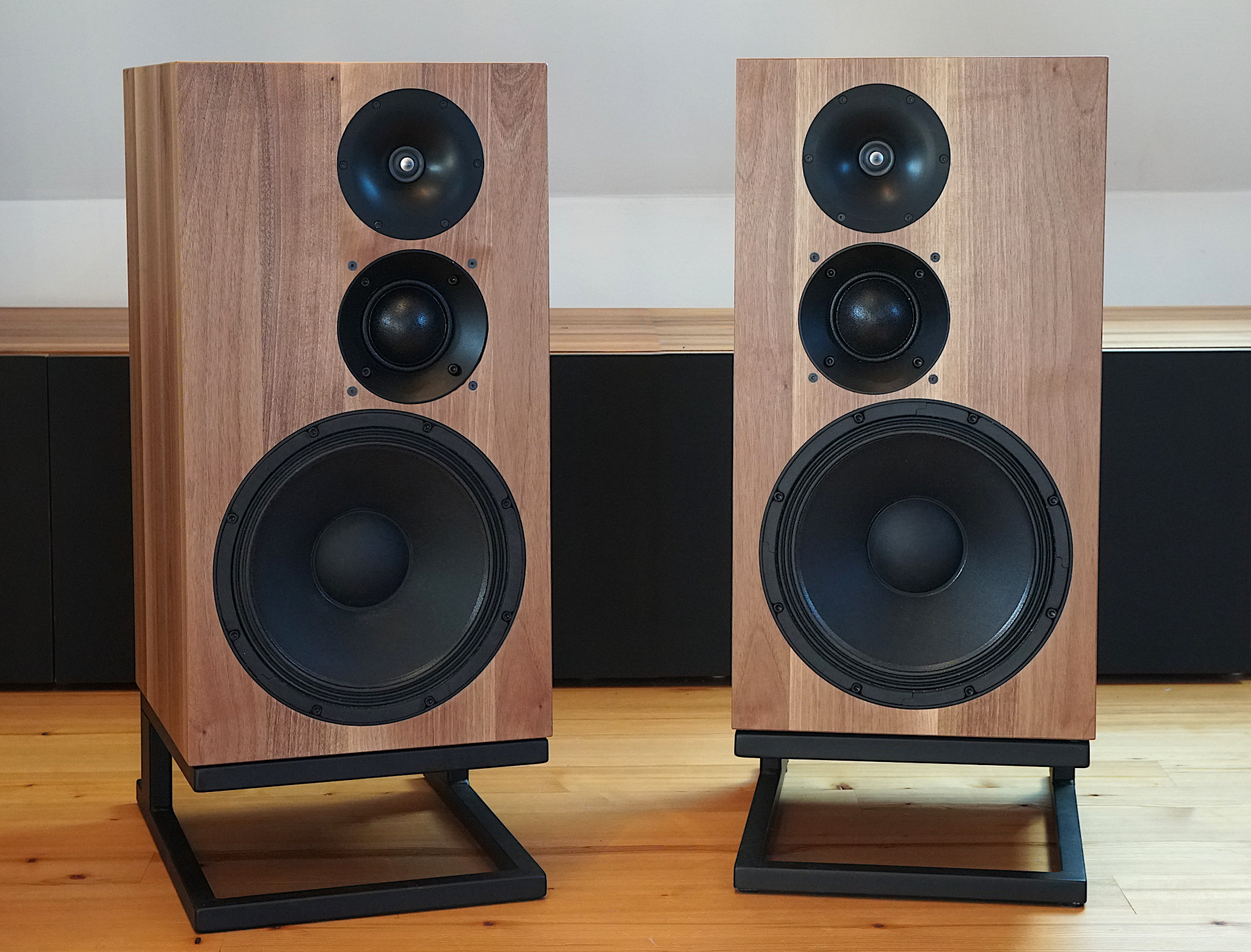
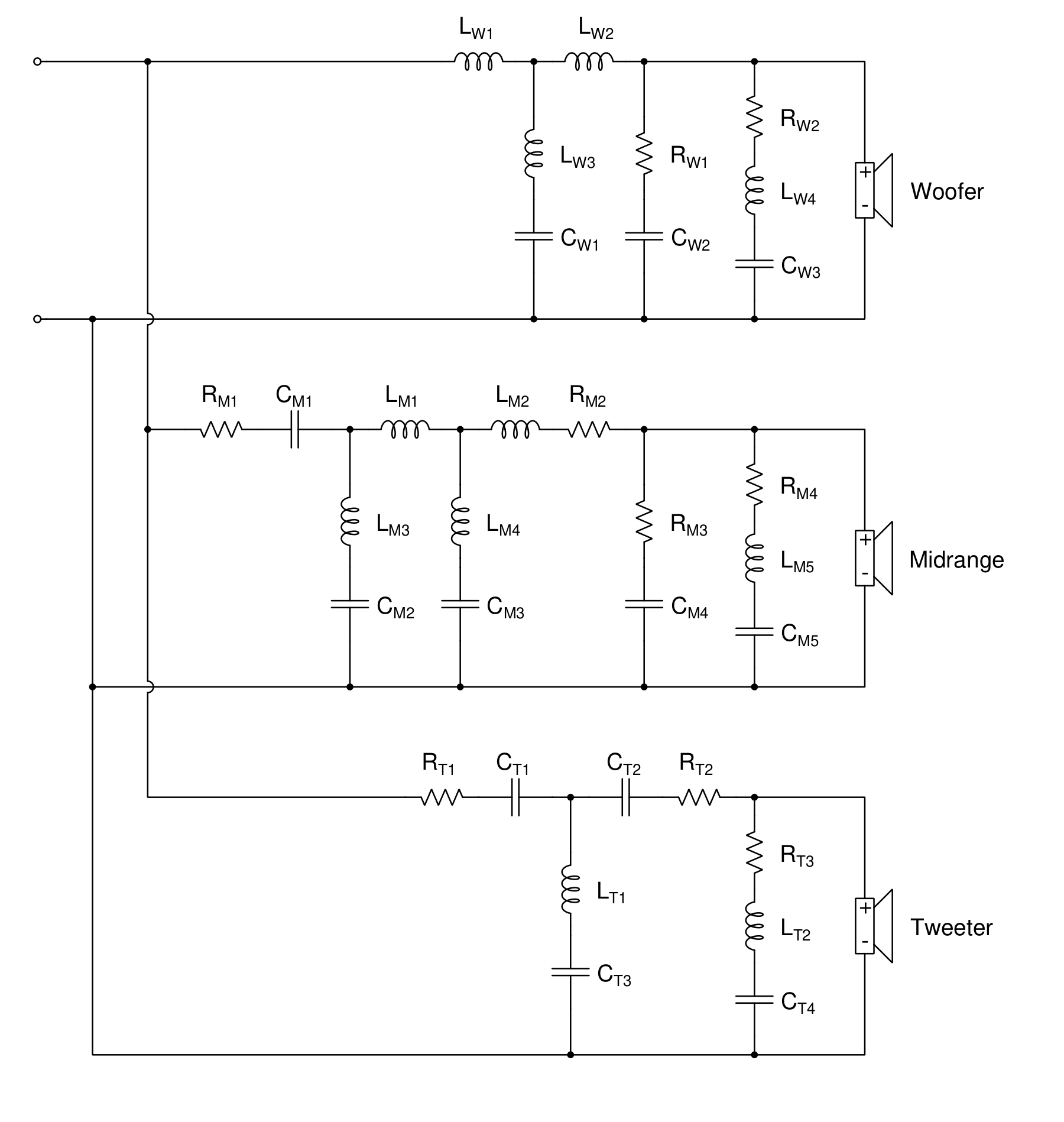
And a XO from Mt Olympus!
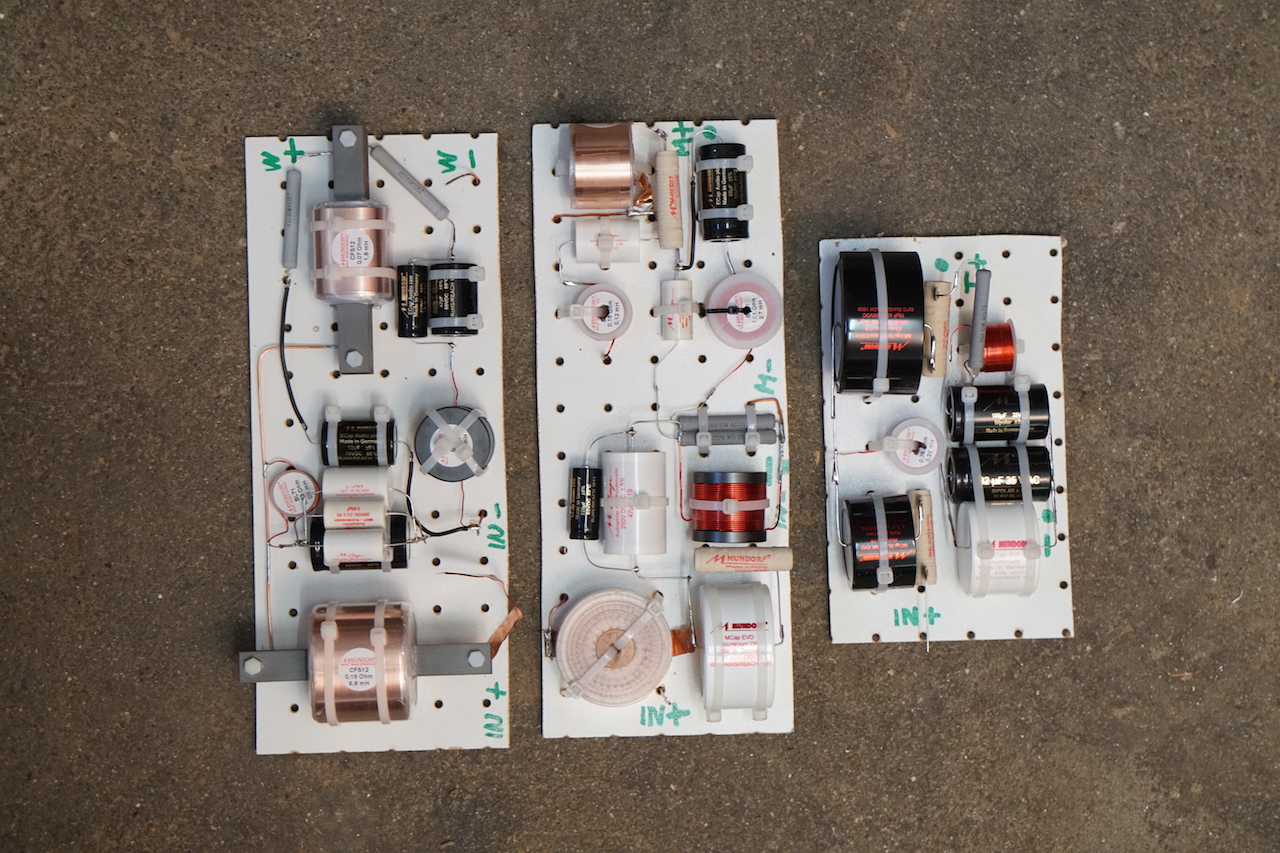
Congratulations on a superb design! I seem to be having a hard time finding a frequency response graph, a distortion graph, both vs frequency on X axis. Also, a step response function measurement would be great to see too. Your speaker reminds me of the $25k ATC SM’s I have always wanted but taken to a whole new level.
Chapeau!
Cheers,
X
Let’s look at it again for sheer impressiveness...
And a XO from Mt Olympus!
Last edited:
Hi X
Frequency response, step response and lots of other graphs and data are available in the docs: GitHub - mbrennwa/osmcdoc: Documentation for the Open Source Monkey Coffin
I measured the woofer distortion early on during the process of choosing the best woofer (the results are somewhere in this thread). I have also done a quick'n'dirty distortion sweep of the whole speaker sometime during the x-over development. However, I never made a proper distortion measurement of the whole speaker. I might do that sometime, but it won't be anytime soon. The speakers are upstairs, where I need them for music listening 😀
Frequency response, step response and lots of other graphs and data are available in the docs: GitHub - mbrennwa/osmcdoc: Documentation for the Open Source Monkey Coffin
I measured the woofer distortion early on during the process of choosing the best woofer (the results are somewhere in this thread). I have also done a quick'n'dirty distortion sweep of the whole speaker sometime during the x-over development. However, I never made a proper distortion measurement of the whole speaker. I might do that sometime, but it won't be anytime soon. The speakers are upstairs, where I need them for music listening 😀
Ok, that was a lot of work to get the graph. It wasn’t obvious that the documents would be under “See Code” for Github. I see a single black and white total system response curve which looks very nice. I was hoping to see the usual individual 4 curves overlaid on same plot (woofer, mid, tweeter, combined). This would be similar to your crossover development plots as generated by the XO software. I’ll make a PNG image of the frequency response and step response from your pdf document and post here - maybe you can link it to Post #1. That’s something that should be instantly viewable under a description of a speaker from within DIYA’s servers. It prevents it from accidentally becoming orphaned should a third party server ever goes extinct.
Your document is very nice and thank you for taking the time to write it. Great one point resource.
...Edit
So here, extracted from the pdf and put into PNG file format and now stored on DIYA servers in perpetuity...
Measured Frequency Response - very nice (it would be nice to see the response in finer detail semi-log plot showing small tick within the 10dB major divisions, generally, a speaker of this quality would have plots with 5dB major divisions and 1 small tick per dB, and for the bass, the Hz scale could go lower to show where the -10dB point is):
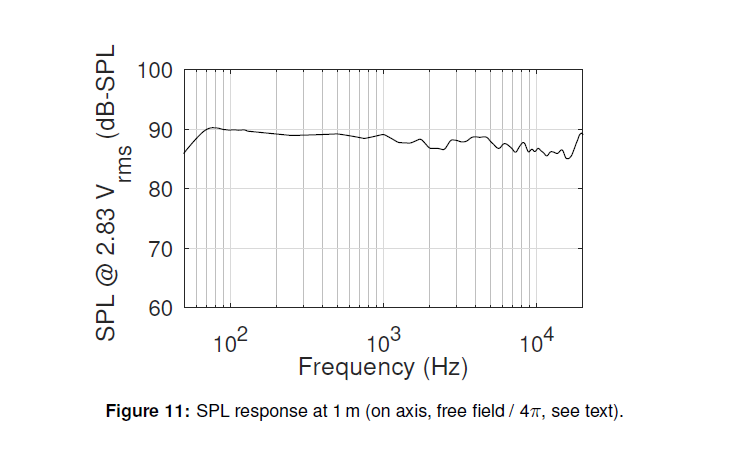
Measured Step Response:
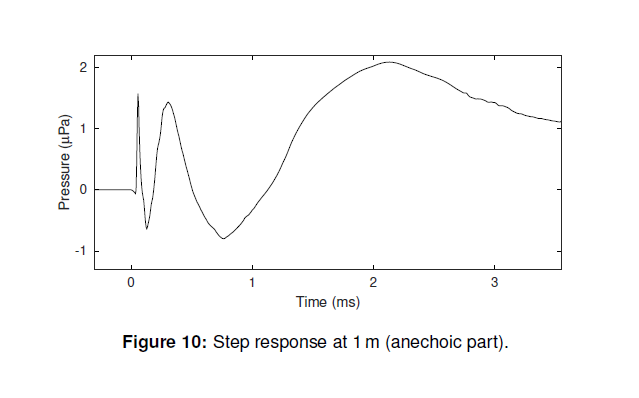
Measured Polar Response:
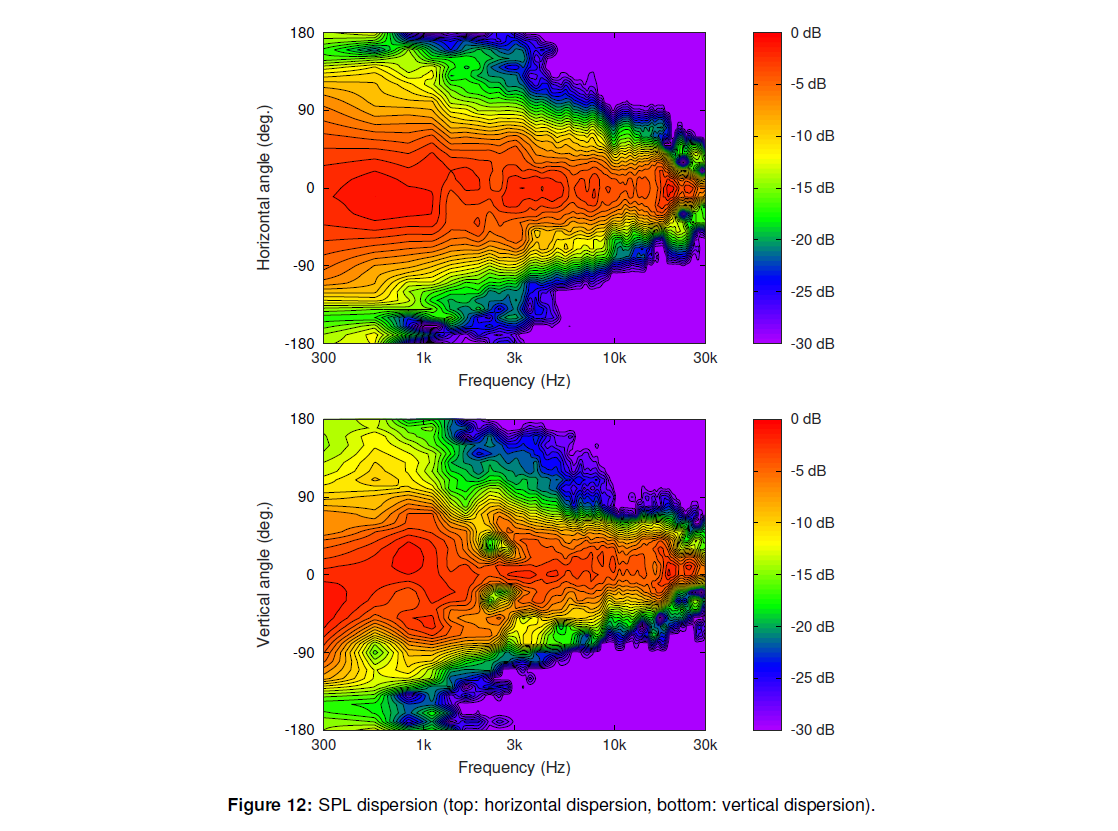
Measured CSD:
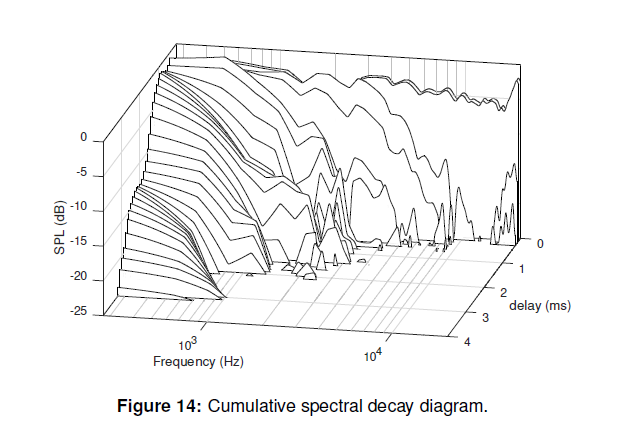
Your document is very nice and thank you for taking the time to write it. Great one point resource.
...Edit
So here, extracted from the pdf and put into PNG file format and now stored on DIYA servers in perpetuity...
Measured Frequency Response - very nice (it would be nice to see the response in finer detail semi-log plot showing small tick within the 10dB major divisions, generally, a speaker of this quality would have plots with 5dB major divisions and 1 small tick per dB, and for the bass, the Hz scale could go lower to show where the -10dB point is):
Measured Step Response:
Measured Polar Response:
Measured CSD:
Attachments
Last edited:
Matthias,
I am assuming that the woofer is the 8 ohm version?
Faital also has it in 16 ohm.
Want to get the right one.
Thanks
I am assuming that the woofer is the 8 ohm version?
Faital also has it in 16 ohm.
Want to get the right one.
Thanks
Flush Mount and miniDSP
A couple of questions.
- What do you think would be the affect of flush mounting these for main speakers in a studio?
- It is my understanding that you modeled the crossovers in miniDSP. Would it be possible to get the miniDSP configs to use with a tri-amped version?
I already have a number of amps and a miniDSP is actually cheaper than the passive crossover components.
gabo
A couple of questions.
- What do you think would be the affect of flush mounting these for main speakers in a studio?
- It is my understanding that you modeled the crossovers in miniDSP. Would it be possible to get the miniDSP configs to use with a tri-amped version?
I already have a number of amps and a miniDSP is actually cheaper than the passive crossover components.
gabo
- Home
- Loudspeakers
- Multi-Way
- Open Source Monkey Box
